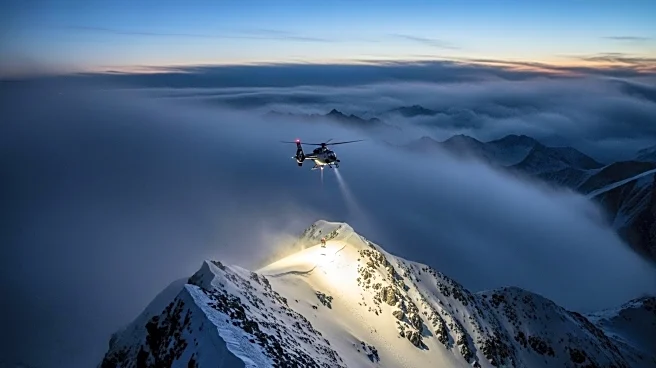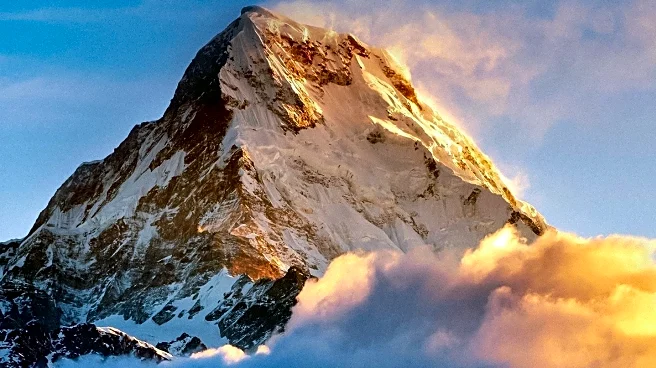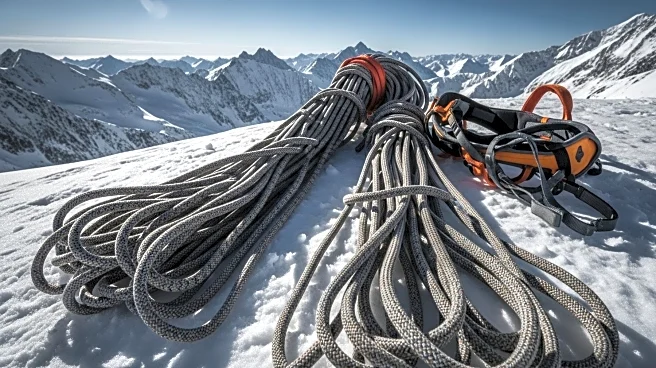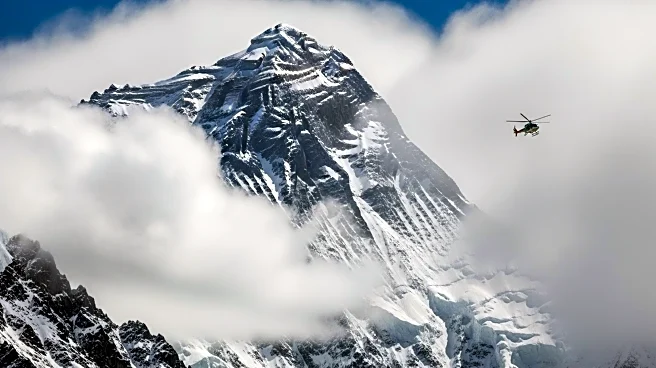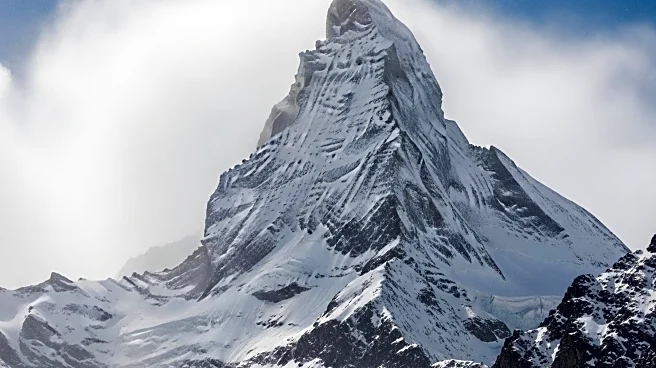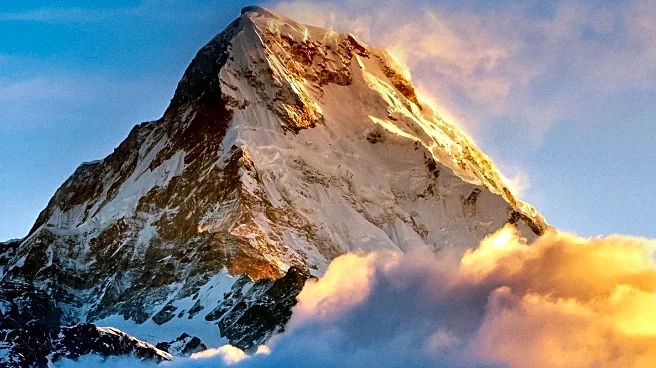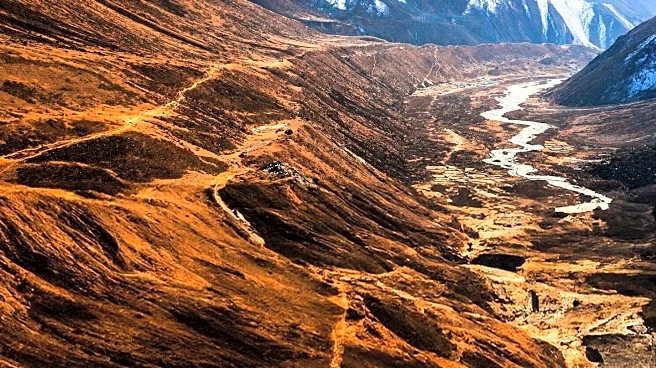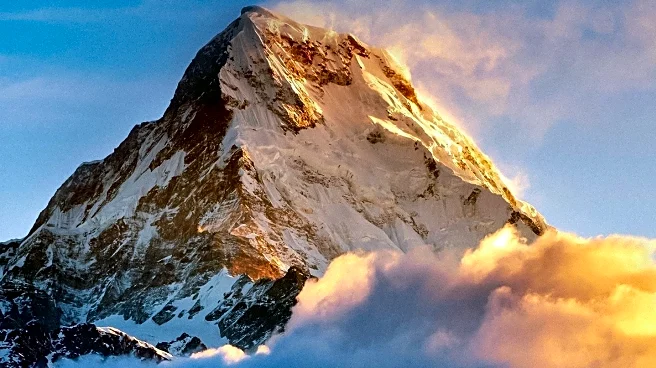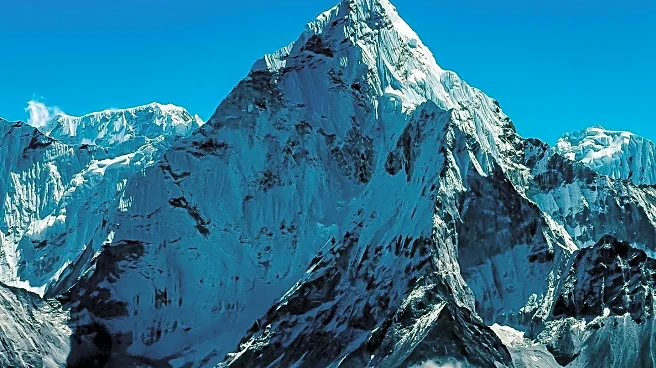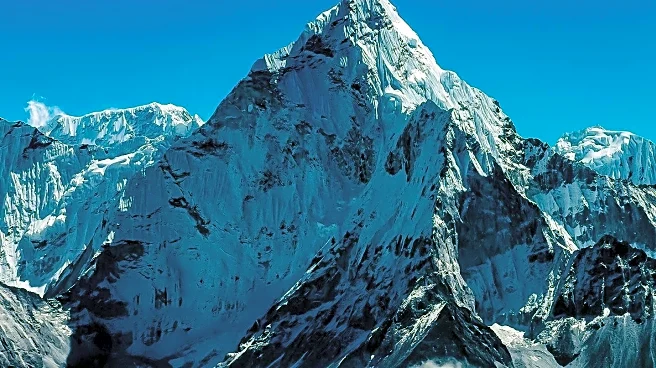What's Happening?
A powerful blizzard has trapped hundreds of hikers near Mount Everest, prompting extensive rescue efforts. The snowfall began on October 3 and continued through October 4, affecting the eastern slopes of the mountain. Approximately 1,000 hikers were initially trapped, but rescue teams have managed to guide many to safety. As of the latest reports, around 350 hikers have reached the township of Qudang, while contact has been established with over 200 others still stranded. The blizzard coincided with China's National Day Golden Week holiday, which saw a surge in visitors to the region. Local villagers and rescue teams have been deployed to clear snow and facilitate the evacuation of those remaining in the mountainous area.
Why It's Important?
The situation underscores the vulnerability of mountaineering activities to extreme weather conditions, particularly during peak tourist seasons. The blizzard has disrupted the holiday plans of many and highlights the risks associated with high-altitude hiking. The incident may lead to increased scrutiny of safety measures and emergency preparedness for such expeditions. The economic impact on local tourism could be significant, as the region relies heavily on visitors during this period. Additionally, the event may prompt discussions on climate patterns and their influence on weather unpredictability in mountainous regions.
What's Next?
Rescue operations are ongoing, with efforts focused on bringing the remaining stranded hikers to safety. Authorities are coordinating with local villagers to ensure the evacuation process is efficient and safe. The suspension of ticket sales and entry to the Everest Scenic Area may continue until conditions improve. This incident may lead to a review of safety protocols and emergency response strategies for future expeditions. Stakeholders, including local governments and tourism operators, may need to reassess their preparedness for sudden weather changes.
Beyond the Headlines
The blizzard's impact on Mount Everest highlights broader concerns about climate change and its effects on weather patterns. The unpredictability of such events poses challenges for both local communities and the tourism industry. Long-term shifts in climate could alter the traditional climbing seasons, affecting the livelihoods of those dependent on mountaineering tourism. Ethical considerations regarding the safety of tourists and the responsibilities of tour operators may also come to the forefront.

